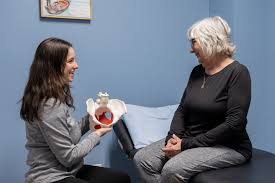Incontinence is a medical issue that involves the involuntary loss of bladder or bowel control, leading to unexpected leakage. Understanding the various aspects of incontinence can help individuals recognize symptoms, identify potential causes, and explore available treatment options. Here is more information on the fundamental elements of this condition, from its basic definition to advanced treatment methods:
What Is Incontinence?
Incontinence refers to the involuntary loss of bladder or bowel control, resulting in the unintentional release of urine or feces. This condition occurs when the muscles and nerves responsible for controlling urination and defecation fail to function properly. The severity can range from occasional minor leaks to complete loss of bladder or bowel control.
Medical professionals classify incontinence as a symptom rather than a disease itself. The condition can develop temporarily due to infections or medications, or it may persist as a chronic condition. Age, gender, and underlying health conditions can influence the likelihood of developing incontinence.
What Causes It?
Multiple factors contribute to the development of incontinence, with causes varying based on the type and individual circumstances. Weakened pelvic floor muscles often play a central role, particularly after childbirth, surgery, or the aging process. Nerve damage from conditions such as diabetes, multiple sclerosis, or spinal cord injuries can disrupt normal bladder and bowel function. Urinary tract infections, constipation, and enlarged prostate glands may also contribute to the condition.
What Are the Symptoms?
Incontinence is primarily characterized by the involuntary loss of urine or feces. Additional symptoms may also occur, affecting daily life and activities.
- Strong, sudden urges to urinate that cannot be delayed
- Frequent urination, especially at night
- A feeling of incomplete bladder emptying after urination
- Urine leakage during activities like coughing, sneezing, or exercising
- Bowel incontinence, ranging from minor soiling to full loss of control
These symptoms can vary in severity, but recognizing them is key to effectively addressing and managing this condition.
What Are the Different Types?
Incontinence manifests in several distinct forms, each with unique characteristics and underlying mechanisms. Understanding these types helps medical professionals develop targeted treatment plans. Urge incontinence, also known as overactive bladder, involves a sudden, intense urge to urinate followed by involuntary bladder emptying. This type occurs when bladder muscles contract unexpectedly, creating pressure that overwhelms the sphincter’s ability to remain closed.
Stress incontinence occurs when physical pressure on the bladder exceeds the sphincter’s ability to remain closed. Activities that increase intra-abdominal pressure, such as coughing, sneezing, laughing, or exercising, trigger urine leakage. This type commonly affects women following childbirth or during menopause due to weakened pelvic floor muscles.
How Can You Treat Them?
Treatment approaches for incontinence vary based on the type, severity, and underlying causes. Conservative treatments often serve as first-line interventions and may include pelvic floor exercises, bladder training, and lifestyle modifications. Dietary changes, such as reducing caffeine and alcohol consumption, can help manage symptoms.
Urgent PC is an advanced treatment option for individuals with urge incontinence who have not responded to conservative therapies. This percutaneous tibial nerve stimulation therapy involves inserting a thin needle near the ankle to stimulate the tibial nerve. The treatment aims to modify nerve signals between the bladder and brain.
Learn More Today
Incontinence affects individuals across various age groups and backgrounds. Recognition of symptoms, understanding of different types, and awareness of treatment possibilities can guide individuals toward appropriate medical care. Early intervention may lead to better outcomes and improved quality of life. Take the first step toward managing this condition by scheduling a consultation with a qualified healthcare provider today.





Leave a Reply